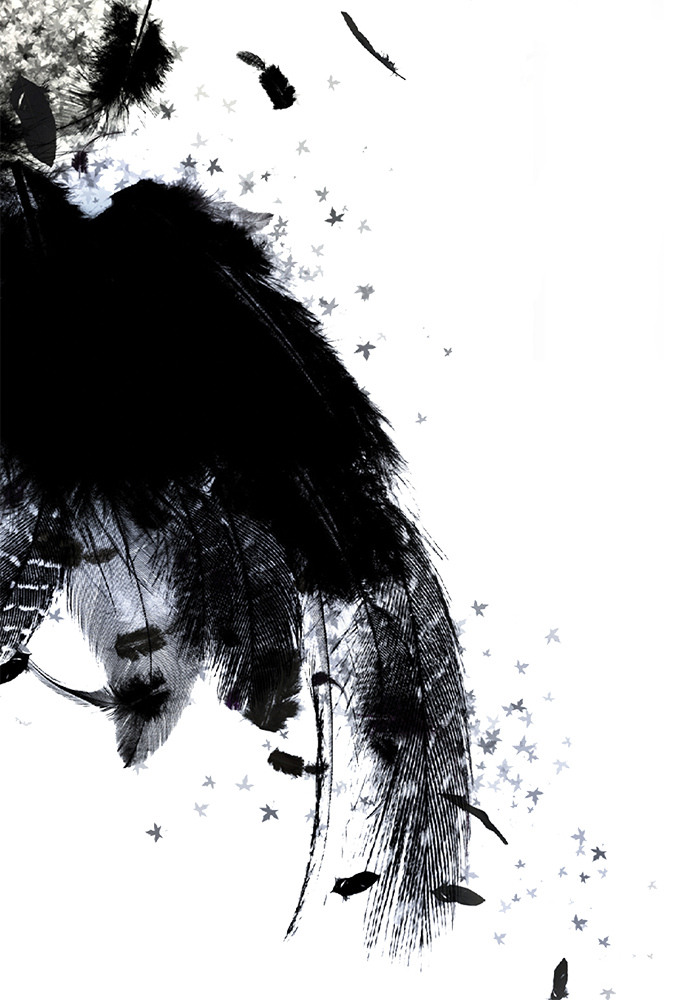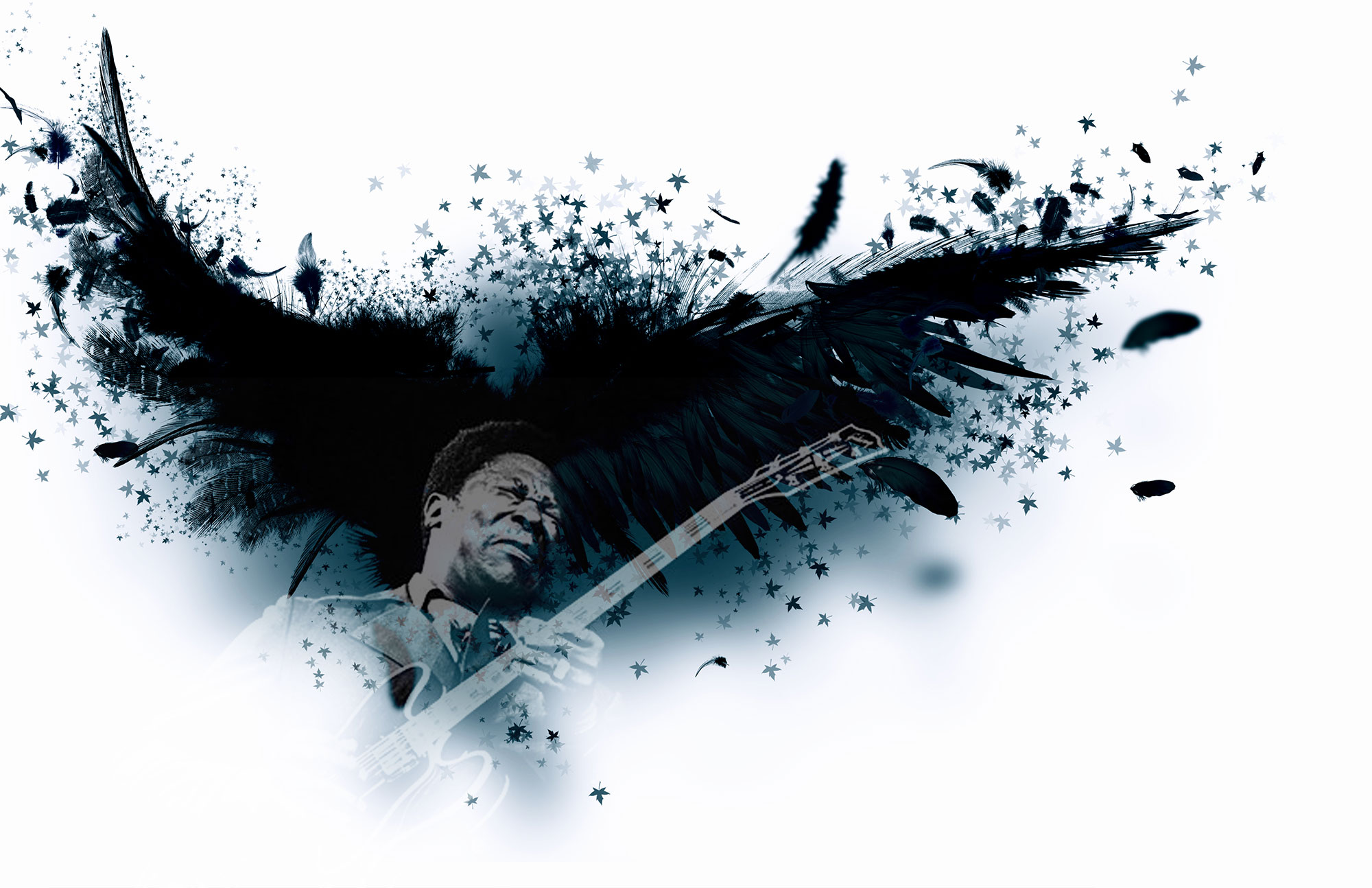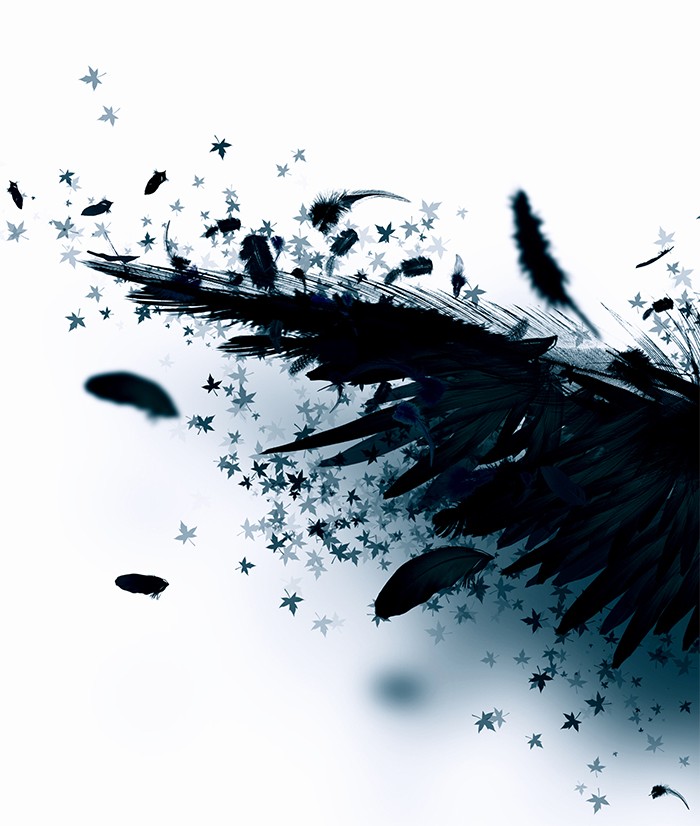![]()
Like many guitarists, I’ve listened more times than I can count to “Sweet Little Angel” from B.B. King’s 1964 classic Live at the Regal album. The hair still stands up on the back of my neck when the horns come in on the third verse, and the way he opens his solo, dodging and weaving between the major and minor pentatonic scale is still, to me, one of the most concisely thrilling encapsulations of call and response on the blues.
As you might discern from the crowd’s ecstatic response that night, “Sweet Little Angel” was already an established part of King’s repertoire in 1964. He first cut the song in 1956, reaching a respectable #8 on the R&B charts with it that year. But if, like me, you’re more familiar with the Regal recording, when you first hear that 1950s version, you may think: what the heck? Guitar-wise, mid-fifties B.B. has more of the fleet T-Bone Walker sound he evolved from, brighter and busier, without the patient, sensuous gloss his playing had gained just eight years later. Compared to the Regal recording, the horns are relatively static, and the pianist, with his steady 12/8 comping, lacks the prodding, insistent commentary Duke Jethro brings to the live band.
You can’t really see what King did with this song just by looking backwards from now. In order to see what a hip, transformative job he did, you need to come at it from the opposite direction, starting with Lucille Bogan.
If B.B.’s studio take on “Sweet Little Angel” sounds like 50s rock ‘n’ roll, that’s because it is, more or less. Which, looking back with almost sixty years’ hindsight, may sound dated. At the time though, B.B.’s presentation of this particular song, in this particular way, was in fact emblematic of a lifelong effort to present the blues that he loved, to as wide an audience as possible, while still sounding like himself. You can’t really see what King did with this song just by looking backwards from now. In order to see what a hip, transformative job he did, you need to come at it from the opposite direction, starting with Lucille Bogan.
Lucille who?
No, not the lady B.B. named his guitar after. Lucille Bogan was a pre-war “classic blues singer,” that is, a female singer working with piano accompaniment, singing anything from actual blues songs to vaudeville and tin pan alley material, which may or may not have had the word “blues” in the title. Bogan, who wrote many of her own songs and came to specialize in the most transparently suggestive material she could get away with, recorded a song called “Black Angel Blues” in 1930.
Sound vaguely familiar?
That would have been that, especially from a guitarist’s point of view, but then Tampa Red recorded “Black Angel Blues” in 1934. In the pre-war Chicago scene, Tampa Red was big news as an accompanist, solo artist, bandleader and all-around musician’s musician. Singing in a relaxed, urban vein and playing in open E tuning with faint piano accompaniment, Red’s version featured his clean fingerpicking and elegant slide licks throughout.
Tampa Red was a big influence on many guitarists, including Robert Nighthawk, and that influence is on full display on Nighthawk’s version of the song. Recorded in 1949, Nighthawk’s version jumps out of the gate with a hotter, more electrified slide sound that owes a direct debt to Red’s 1934 track, now taking its name directly from the first line of the song, “Sweet Black Angel.” Nighthawk adopts Red’s opening slide line, now playing it in standard tuning.
Not to be outdone by a protégé, Red revisited the song himself a year later with a full band and the title “Sweet Little Angel,” curiously setting aside his slide in favor of a standard, fretted electric guitar approach.
King is possessed of a connoisseur’s appreciation of what came before, the hippest kind of fandom.
 Which brings us to B.B. King. Read any interview with him, and one thing that comes through loud and clear is a deep and passionate knowledge of music. As befits a former D.J., King is possessed of a connoisseur’s appreciation of what came before, the hippest kind of fandom. He knows from not just T-Bone Walker and the country bluesmen, but also Charlie Christian, Lonnie Johnson and Django Reinhardt. He sings “Caledonia” because he’s hip to Louis Jordan. He can reel off everybody who did “Every Day I Have The Blues” before him, up through the definitive version by Joe Williams and Count Basie. According to Blues Boy: The Life and Music of B.B. King, he got the idea to record “Sweet Little Angel” from hearing Robert Nighthawk.
Which brings us to B.B. King. Read any interview with him, and one thing that comes through loud and clear is a deep and passionate knowledge of music. As befits a former D.J., King is possessed of a connoisseur’s appreciation of what came before, the hippest kind of fandom. He knows from not just T-Bone Walker and the country bluesmen, but also Charlie Christian, Lonnie Johnson and Django Reinhardt. He sings “Caledonia” because he’s hip to Louis Jordan. He can reel off everybody who did “Every Day I Have The Blues” before him, up through the definitive version by Joe Williams and Count Basie. According to Blues Boy: The Life and Music of B.B. King, he got the idea to record “Sweet Little Angel” from hearing Robert Nighthawk.
‘Sweet Little Angel’ helped establish King as an R&B artist in the black community, but Live At The Regal had a lot to do connecting B.B. to a wider audience
Tampa Red was hot, contemporary stuff in 1934; while Nighthawk updated Tampa Red with electric slide and Willie Dixon’s propulsive bass, his version also nodded to the postwar vogue for a rawer sound, one that harked back to, yet amplified – literally and figuratively – the sounds of the Delta. In decking out “Sweet Little Angel” with horns, prominent drums, and sophisticated, jazz-inflected guitar licks, King re-imagined the song as a hip R&B number that could make the charts alongside other proto-rock ‘n roll of the era. In hindsight, it seems like the next logical step, but it’s indicative of King’s combination of historical awareness and burning ambition that he took aim at the airwaves with such an archeological piece of songcraft.
“Sweet Little Angel” helped establish King as an R&B artist in the black community, but Live At The Regal had a lot to do connecting B.B. to a wider audience and that show’s performance of the song is the one that’s had a lasting impact on subsequent artists. Just a couple of years later, Duane and Gregg Allman recorded their “B.B. King Medley” as the Hour Glass, rolling through not just “Angel” but also “It’s My Own Fault” and “How Blue Can You Get,” showing direct inspiration from the Regal album.
You can find versions by Otis Rush, Freddie King and Jimmy Johnson, R.L. Burnside (solo, with slide once again), Howlin’ Wolf (with Muddy on slide!), John Hammond, Jr., and versions titled “Black Angel” again by Corey Harris and Buddy Guy (with G.E. Smith).
Speaking of Guy, I’d be remiss if I didn’t mention the version of “Sweet Little Angel” on his 1968 Vanguard debut, A Man and The Blues. While you can hear aspects of B.B.’s vocal in Buddy’s singing, the guitar approach is entirely his own. Even more interesting, you can hear that same guitar approach at work three years earlier as Buddy backs up Big Mama Thornton on the same song on her In Europe recording.
I’m sure B.B. King wasn’t thinking about any of this on that night fifty years ago when he blew the socks off of the audience at the Regal Theatre. And as much as I love hearing the likes of Tampa Red, Robert Nighthawk and Buddy Guy do this song, I imagine B.B.’s live version from 1964 will still be the definitive version to anyone digging the blues fifty years from now.





